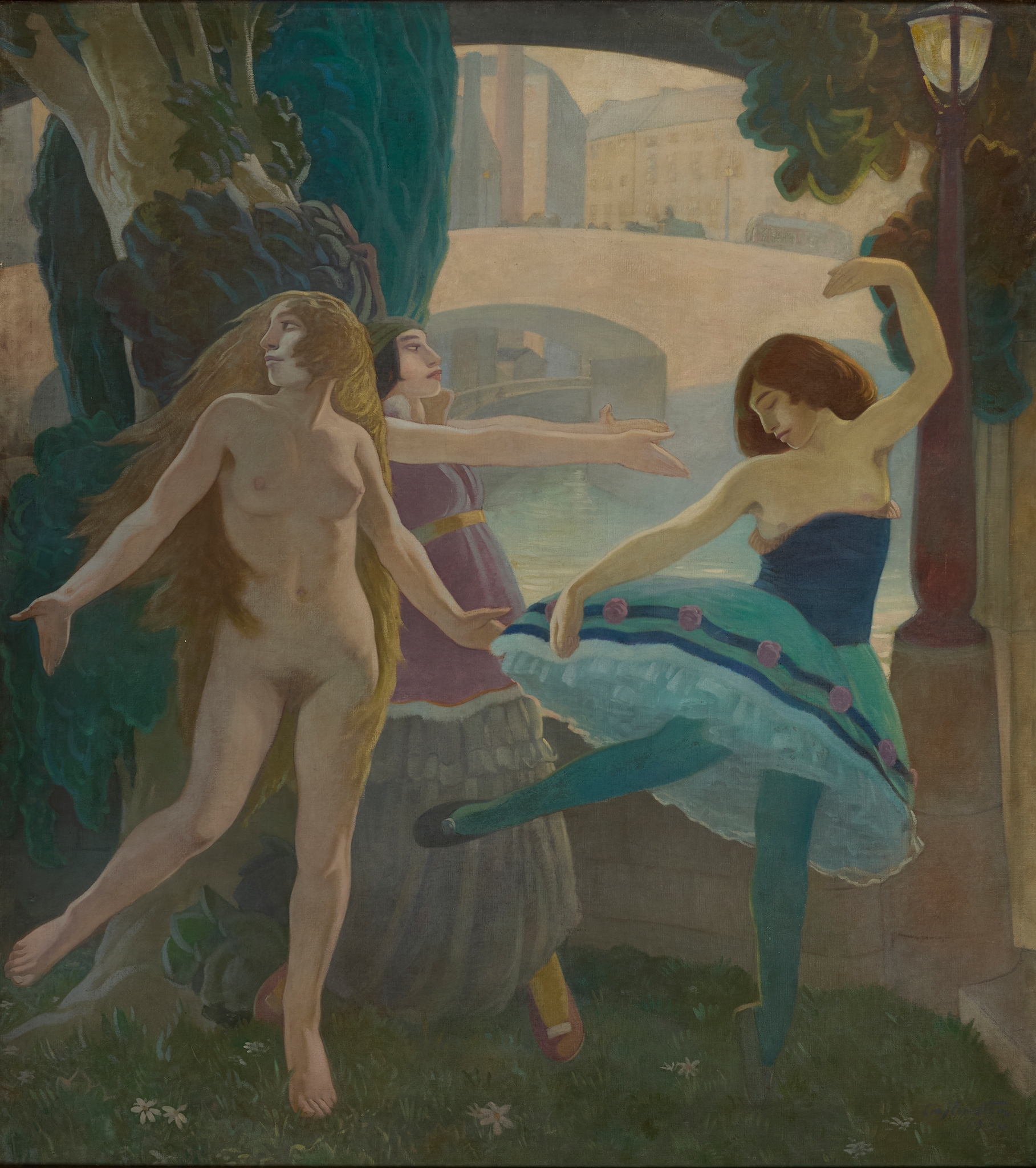
Lot 141

ERIC HARALD MACBETH ROBERTSON (SCOTTISH 1887-1941)
LE RONDE ETERNEL








Scottish Paintings & Sculpture
Auction: Evening Sale | Lots 109 to 207 | Thursday 04 December 2025 from 6pm
Description
Signed and dated 1920, oil on canvas
Dimensions
168cm x 152.5cm (66in x 60in)
Provenance
Lyon & Turnbull, Edinburgh, Scottish Paintings & Sculpture, 4 December 2020, lot 168, where acquired by the present owner
Literature:
Duncan Macmillan, Scottish Art 1460-1990, Mainstream Publishing, Edinburgh, 1990, p.334
Julian Halsby and Paul Harris, A Dictionary of Scottish Painters 1600 to the Present, Canongate Books, Edinburgh, 1990, illustrated p.198
Footnote
Eric Robertson is a fascinating figure in Scottish Art and his works rarely come onto the market. Le Ronde Eternel was painted in 1920, an important date for both the artist and the Edinburgh Group, his loose association of fellow artists and friends, who were organised shared exhibitions in the Scottish capital from 1912 until 1921. These exhibitions gained considerable exposure: ‘we find undoubted signs of energy in place of ennui’ one critic noted, but also a level of notoriety, as another exclaimed: ‘usually people look to the Edinburgh Group, as we know them, for something unique, rather than universal; for something of pagan brazenness rather than parlour propriety. Half of Edinburgh goes…secretly desiring to be righteously shocked, and the other half goes feeling deliciously uncertain it may be disappointed by not finding anything sufficiently shocking.’
Robertson was a vital member of the group, alongside his wife, the artist Cecile Walton, and he drew some of the scandal, for both his paintings and his complicated personal life. Originally a pupil of John Duncan, he appears to have fallen out of favour with the older artist due to his suggestive, rather than classical, depiction of the nude. In Le Ronde Eternel, which translates to ‘the eternal circle,’ we can see both sides of this: the decorative effect, gentle palette and dreamy, symbolist quality that we can associate with Duncan, but also the element of suggestion, with the nudity of the left-hand figure made more explicit by its clear contrast with two other partially clothed figures. The figure on the right has been identified as the dancer Lucy Smith.
Le Ronde Eternel is one of two completed related paintings, along with Love’s Invading (Culture Edinburgh, acc.no.CAC1982/3), from a planned series of five, derived from Robertson’s 1915 drawing, The Daughters of Beauty. John Kemplay describes the drawing as portraying a ‘host of young women, some of his acquaintance and some of his imagination, set against a backdrop of architectural features of Edinburgh and Dumfries, the town in which he was born.’ During the First World War, Robertson served in France with the Friends’ ambulance service, but returned to the subject afterwards to complete the larger scale paintings.








